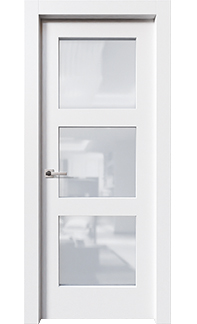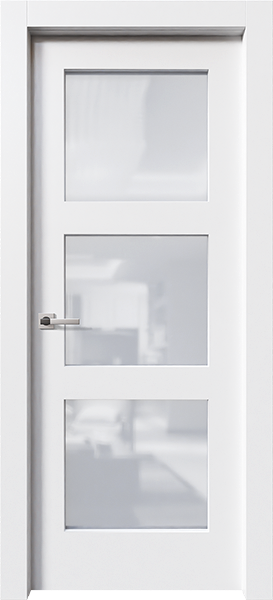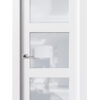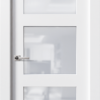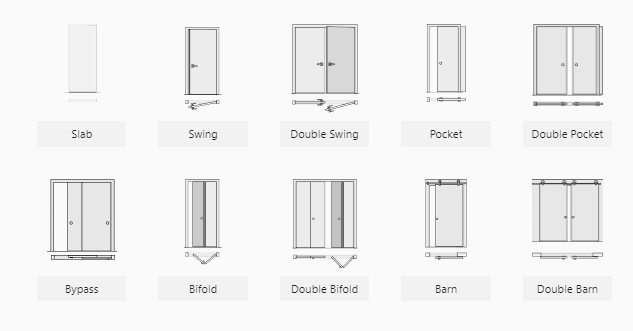Description
THE DOOR NAME ORIGIN – “SHAKER STYLE 3 EQ LIGHT LAMI GLASS”
This interior door model has a secret.
Don’t get me wrong, there’s nothing mysterious about its basic features and functions. It is, like all interior doors in this collection, a product of several technological breakthroughs achieved in this century. These have given our engineers and designers lots and lots of freedom, and our customers a great many new options as well as amazingly low prices.
Such as the “wrap” method, a combination of heat and pressure working on molecular level, which effectively fuses the finish with the surface, rendering the final product fade-proof, warp-proof, and scratch and moisture resistant. This is certainly a huge step forward from traditional finishing approaches, and it takes sound-proofing and thermal insulation qualities to a whole new level.
Nor is the hardware a big mystery. Like the Italian-made 3D-adjustable self-lubricating concealed hinges: what you see is what you get, i.e. easier than usual installation of your interior doors, no creaking ever, and the boundless joy of never seeing the pin, because, well, there is no pin. It’s elegant, it’s cool, it’s beautiful. But hardly mysterious.
Nor is there anything particularly mysterious about the Shaker movement, originating in the middle of the Nineteenth Century and quickly spreading westward from New England. They aimed for simplicity. They rejected all baroque and even some neoclassical features as a matter of principle.
The three equal-sized lites, however, come with a story.
Strictly speaking, this interior door is not really a French door, just a door with lightly laminated glass, no pun intended. That said, the design is certainly influenced by the history of French doors (you might want to check out the blog entry on the subject), and, as such, the number three isn’t just a random number here.
When Alexandre Dumas the Father, a novelist of some renown, began to conceive his celebrated masterpiece, what he seems to have had in mind was presenting his readers with three portraits – three men representing what back then was viewed as “typical Frenchmen”: a noble-minded aristocrat; a wily politician; and a good-natured, yet highly loyal, simpleton. One may debate the fact that these are quintessential French men, and one would be right: France is a large country with lots of people, and the number of French “types” is a good deal larger. True, but let us remember that Dumas was a romantic writer, and one of romanticism’s goals is to present an idealized and, at the same time, elegantly simplified, version of people and events.
Thus, the three “temperaments.”
Aristocratic: when the lead character of the novel asks Athos why he wouldn’t want to borrow a horse from the captain, the reply is truly aristocratic, combining arrogance and meekness: “My dear friend, when I have my own horses, I ride. When I don’t, I walk.”
Political: the one-time musketeer and later a priest and later still a plotter believes he is within his rights to use his gullible friend to help him achieve his ambitions, without telling the friend what really is going on.
Simple, loyal, and noble at the same time: the simpleton asks his friend why he got him involved. When the plotter admits he did it for his own selfish gain, the simpleton, looking astoundingly noble in his seeming foolishness, replies, with conviction (he isn’t clever enough to be sarcastic): “Oh. Now I understand. You did it for yourself. I have nothing to reproach you for. You needed my help, and I, remembering our old pledge, “All for one and one for all,” came to assist you. There’s nothing wrong with that.”
Romantic? Yes. Very dramatic, too. Just like this interior door. That’s the secret
FINISH: WHITE
This is a bit tricky. Isn’t White the default finish that would look great on any interior door? Well, not quite.
W. is the color most often associated with perfection, honesty, cleanliness, newness, neutrality, and exactitude. The pigment has been known and used by humans since prehistoric times. In ancient Egypt, W. symbolized purity. Roman patricians paraded around in W. togas to distinguish themselves from the common folk. It was the color of choice of French monarchs. Architects of all epochs used W., with considerable enthusiasm, in various projects and for various reasons. In the United States, architects favored it when designing churches, capitols, and municipal buildings – which is, in fact, a tradition they inherited from classical and Renaissance architecture. According to some experts, most of the buildings in the celebrated Forum were either made of, or clad in, W. marble. In Taoism, it represents the yang or masculine energy, one of the two complementary natures of the universe. Many authors, both classical and contemporary, have referred to W. as a sign of purity, either physical (like William Shakespeare, whose treacherous usurper monarch wishes a heavenly rain would cleanse his blood-stained hand, washing it “white as snow”) or spiritual (like Tennessee Williams, who named his lead character Blanche (derived, incidentally, from the Germanic word blanc)) as a symbol of her innocent child-like spirit, perceptible from the moment she makes her first entrance (through the interior door stage-left).
Back in the Seventeenth Century, Sir Isaac Newton discovered that sunlight is composed of light with wavelengths across the visible spectrum which the human eye perceives as W. It is the lightest of the spectrum, and achromatic (hue-less) to boot, because it fully reflects and scatters all visible wavelengths of light, absorbing none. W. objects stand out in the dark. Depending on the surroundings, an interior door with W. finish might come off as emphatic or tactful, dominant or complementary. It blends seamlessly into most types of decor and, once the owner’s needs and disposition are taken into account, can symbolize – oh, so many different things, while bringing back a myriad memories: from those glorious snowy Alpine slopes and peaks to the fluffy tops of the wayward herd of cumulus cloud heap over the horizon on a balmy afternoon in the Caribbean. Tropical sand beaches are W. due to the high quantity of calcium carbonate they get from tiny bits of seashells ground to powder by the waves. In a number of cultures W. can also symbolize festivity, and be used lavishly to brighten up weddings, birthdays, and anniversaries. It is beautiful. Make sure it goes well with your interior door model, though

